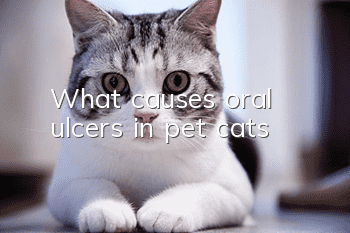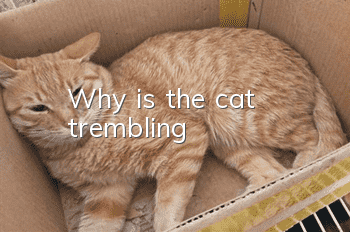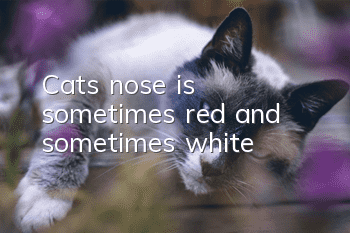What causes oral ulcers in pet cats?

Oral ulcers are one of the common oral diseases in cats. For example, if a cat sometimes eats unnaturally and has bad breath and drools, it may be an oral ulcer. Oral ulcers must be treated in time. If the symptoms worsen, the cat will lose appetite due to pain, discomfort, etc., and may even suffer from physical weakness.
Oral ulcers are mostly caused by stomatitis or glossitis. There are also many other reasons, such as foreign objects or irritating food in the mouth, viral infections, etc., which can also cause these symptoms.
1. Cat stomatitis
Stomatitis refers to the inflammation of the cat’s oral mucosa, tongue and gums, which can lead to ulcers, necrosis and secondary infection. It is characterized by inflammation of the oral mucosa, ulcers, pain, inability to chew and excessive salivation. Stomatitis will develop into eosinophilic granuloma if it is not treated promptly.
Trauma, irritants, bacterial infections, and viral infections associated with gingivitis may all cause stomatitis.
Current treatments for stomatitis include medication and tooth extraction. Drug treatment is mainly based on chlorhexidine cleaning, antibiotics, and hormonal treatment. According to the severity of stomatitis, it can be divided into short-term treatment and long-term treatment. In short-term treatment, the use of hormones is the most effective, such as methylprednisolone, prednisolone, etc. In long-term treatment, because the clinical manifestations are diverse, there is no most effective method among various treatment methods.
Extraction of premolars and molars is an effective treatment for most cases of refractory stomatitis. The quality of life of more than 80% of cats can be improved (some cats require full tooth extraction). Many owners are worried that cats will have difficulty eating after tooth extraction? According to clinical statistics, almost 90% of cats with all teeth extracted can eat normally (owners are best to soak the cat food until soft or give the cat soft food such as canned food) optimal).
2. Glossitis
The cause is the same as stomatitis, which is the mechanical effect of foreign bodies (bone fragments, needles, sharpened teeth and calculus, etc.), the exposure and replacement of new teeth, burns caused by ingesting soup foods and drinks, Corrosion from chemicals (toxic agents such as iodine and mercury chloride) and infections such as herpes viruses can cause glossitis.
According to statistics, cats younger than 1 year old are prone to ulcerative glossitis. The sick cat refuses to eat, is depressed, and in severe cases cannot drink water, so it appears dehydrated. Foul-smelling saliva containing pus and blood often oozes from the corners of the mouth. Severe pain occurred and oral examination was refused. Swelling and warmth of submandibular lymph nodes may sometimes be seen. Dermatitis caused by saliva flowing from the head and neck to the forelimbs.
3. Viral infection
Among the viral infections that can easily induce stomatitis or glossitis, there is HIV infection that is not infective to humans but has no vaccine or treatment. It rarely causes the disease but once it occursLeukemia virus infection with poor prognosis, viral rhinotracheitis with symptoms of nasal cold, etc. This is also the safest and most effective way to prevent this disease. In addition, if the flu virus is infected, blisters and ulcers will appear on the surface of the tongue, accompanied by severe pain, which is so painful that you can't even drink water. However, this infection can also be prevented through vaccination, so vaccination must be done.
For the prevention and treatment of viral infections, the place where cats live must have a good ventilation environment, and utensils used by cats must be disinfected regularly. If the place is not large enough, try not to keep too many cats. When suspicious diseases are found, Cats must be isolated and disinfected in time to prevent contact transmission. Cats must also be fed nutritious food to enhance their ability to resist viruses.
- How to get your cat to get rid of its bad habit of scratching the wall with its paws?
- Regular check-ups for cats are important to keep your cats healthy!
- What’s wrong with cat’s split nails?
- Should different cats eat different cat foods?
- What are the signs that a Siamese male cat is in heat?
- Do I need an injection if my cat bites it?
- Can British Shorthair cats be neutered during estrus? The best time to neuter British Shorthair cats!
- How to treat colds in Siamese cats?
- Why is the cat sleepy?
- Are cats carnivores or omnivores?



